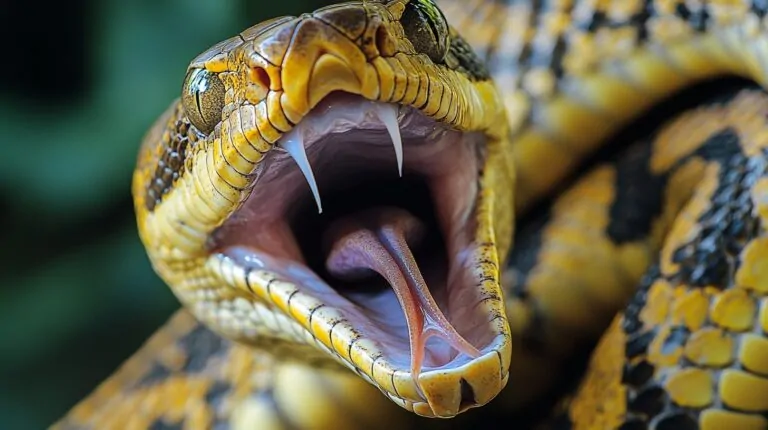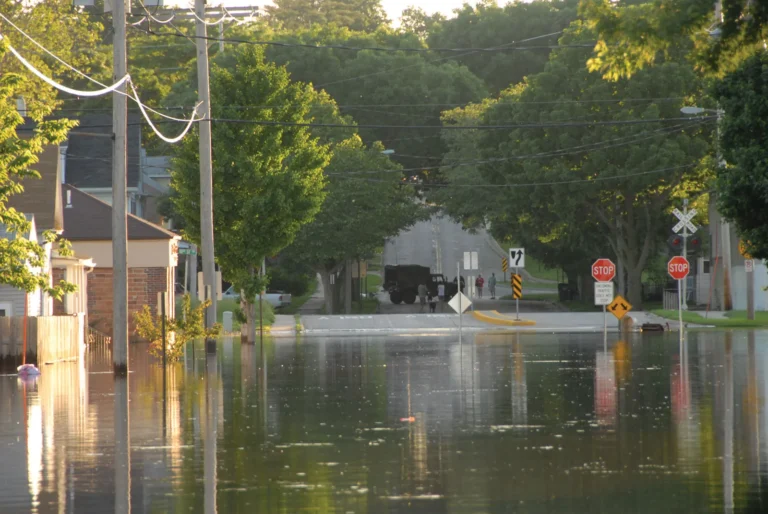Iowa is home to a variety of wasp species that play crucial roles in the ecosystem.
These wasps aid in pollination and help control pest populations.
It is important to exercise caution around wasps due to their ability to sting, especially when their nests are nearby.
But first, we need to be aware of them and how we can recognize them
1. Dark Paper Wasp (Polistes fuscatus)
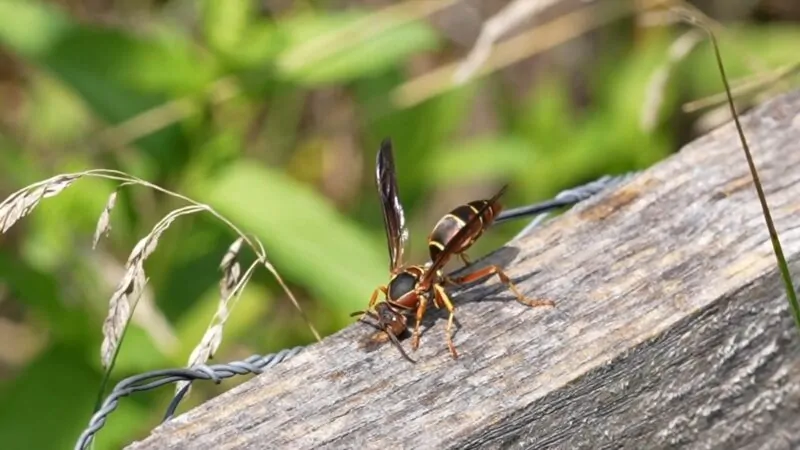
The Dark Paper Wasp, Polistes fuscatus, is easily recognizable by its dark reddish-brown body adorned with yellow bands.
The species often builds its nests around human habitations, including homes and outbuildings, making them a common sight in urban and suburban areas.
These nests are typically constructed from a papery material, often in sheltered locations such as under eaves or in attics.
Dark Paper Wasps are known for their defensiveness, particularly during the early part of the year when they are establishing and expanding their nests.
They are crucial to the ecosystem as they feed on flower nectar and caterpillars, helping control pest populations and contributing to pollination.
Their proximity to human dwellings necessitates caution, as they can become aggressive when they feel their nest is threatened.
2. Bald-faced Hornet (Dolichovespula maculata)
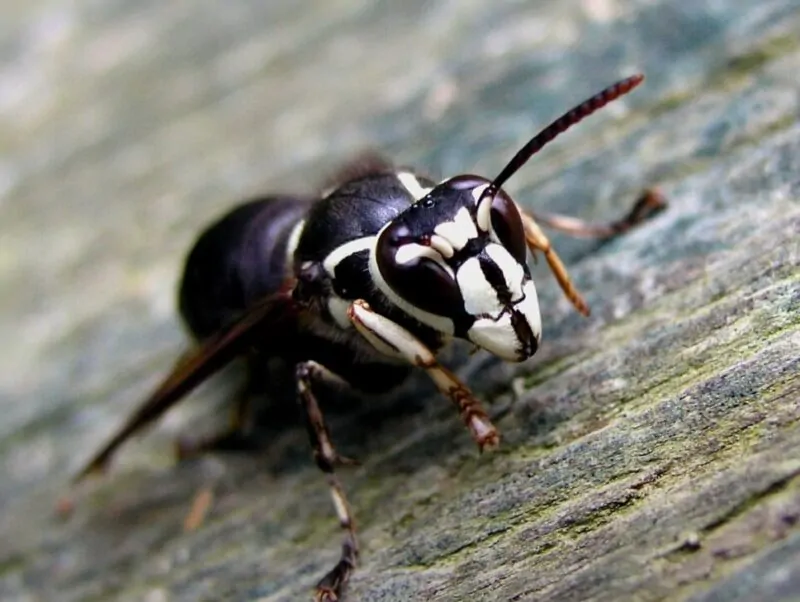
The Bald-faced Hornet, Dolichovespula maculata, stands out with its black body and striking ivory markings, including three distinctive white stripes at the end of its body.
It constructs large, papery nests that resemble footballs, often found hanging from trees, shrubs, or occasionally on buildings.
Bald-faced Hornets are highly aggressive when defending their nests, making them one of the more dangerous wasp species in terms of stings.
Despite their aggression, they are beneficial to the environment.
These hornets are effective pollinators and play a significant role in controlling populations of other insects, including yellowjackets.
Their aggressive nature and prominent nesting habits mean that human encounters are not uncommon, necessitating respect and caution when near their nests.
3. Eastern Yellowjacket (Vespula maculifrons)

The Eastern Yellowjacket, Vespula maculifrons, is characterized by its black body with yellow markings, including an anchor-shaped marking on the first abdominal segment.
These wasps typically build their nests underground in woodlands, parks, pastures, and lawns, which can make them difficult to spot until accidentally disturbed.
Eastern Yellowjackets are known for their aggressive behavior, especially when their nest is threatened.
They play a dual role in the ecosystem by feeding on nectar and fruits, which aids in pollination, and by preying on other insects, which helps control pest populations.
Their nests can host large colonies, and their defensive nature makes them a potential hazard in areas where people and pets frequent.
Awareness and caution are essential when dealing with Eastern Yellowjackets to avoid painful stings.
4. European Paper Wasp (Polistes dominula)
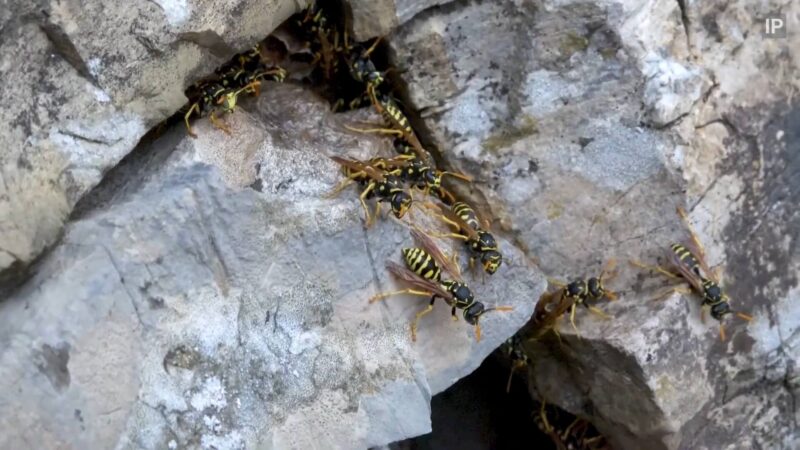
The European Paper Wasp, Polistes dominula, is distinguished by its black body with prominent yellow markings, thin waists, and orange-tipped antennae.
It is known for nesting on or in human-made structures, making them a familiar presence in residential and commercial areas.
European Paper Wasps are relatively non-aggressive compared to other wasp species, but they will defend their nests if they feel threatened.
They are omnivores, feeding on a variety of insects and nectar, which makes them valuable for controlling garden pests and contributing to pollination.
Their ability to adapt to human environments has led to their widespread presence in Iowa.
While generally less aggressive, their nests should still be treated with caution to prevent potential stings.
5. Metric Paper Wasp (Polistes metricus)
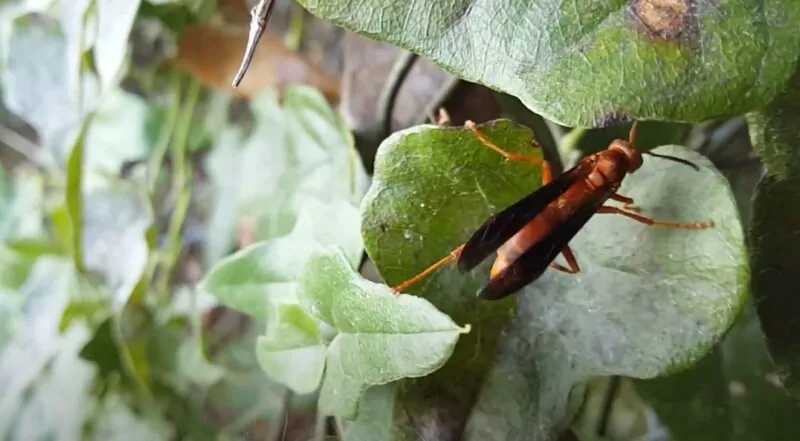
Polistes metricus, known as the Metric Paper Wasp, features a rusty color with black markings and black abdomens.
This species prefers to build nests in sheds, barns, and near water sources, often sharing nesting spaces with other Polistes species.
Metric Paper Wasps are known for their communal nesting habits and their diet of nectar and caterpillars, contributing to both pollination and pest control.
They are less aggressive than other wasp species, making them less of a threat to humans.
The nests should still be approached with caution. Their presence near water sources also highlights their role in maintaining ecological balance by preying on insects that breed in these areas.
6. Fraternal Potter Wasp (Eumenes fraternus)
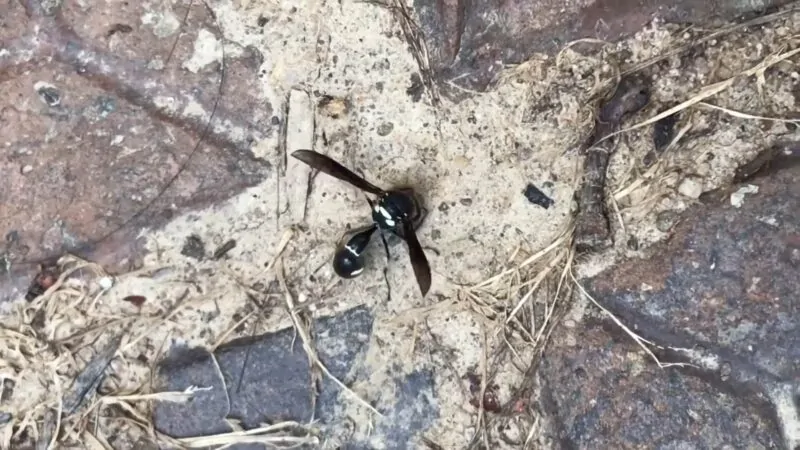
The Fraternal Potter Wasp, Eumenes fraternus, is recognizable by its black, shiny abdomen with ivory markings and metallic bluish-brown wings.
This solitary wasp builds small, pot-like nests on vegetation or human structures, which resemble tiny clay pots. Fraternal Potter Wasps are docile and pose little threat to humans.
They are solitary wasps, meaning each female builds and tends to her own nest.
Their behavior includes paralyzing prey, such as caterpillars, to feed their larvae, ensuring the young have a fresh food source.
Unlike social wasps, they do not defend their nests aggressively, making them safer to observe.
Their nesting behavior and beneficial role in controlling caterpillar populations make them an interesting species to study.
7. Four-toothed Mason Wasp (Monobia quadridens)
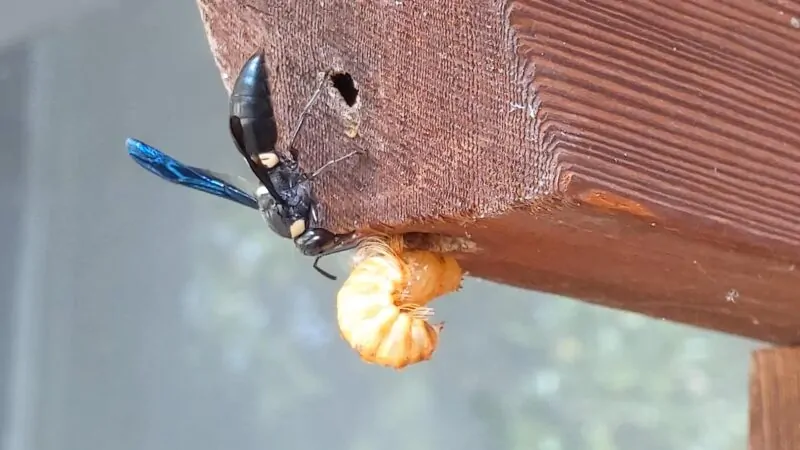
The Four-toothed Mason Wasp, Monobia quadridens, is easily identified by its shiny black body with distinctive white markings that resemble teeth.
These wasps typically nest in existing holes in wood or soil, utilizing natural cavities rather than building their own structures.
As solitary wasps, Four-toothed Mason Wasps are non-aggressive and pose minimal threat to humans.
They play a beneficial role in the ecosystem by preying on caterpillars, which they paralyze and use to provision their nests for their larvae.
This behavior helps control caterpillar populations, making them valuable for natural pest management.
These wasps can determine the sex of their offspring, a fascinating aspect of their reproductive biology.
Observing these wasps offers insight into the complexity of solitary wasp behavior and their ecological importance.
Summary
Wasps in Iowa are diverse and play crucial roles in the ecosystem, from pollination to pest control.
Observing and respecting these insects from a safe distance ensures both their protection and ours.









